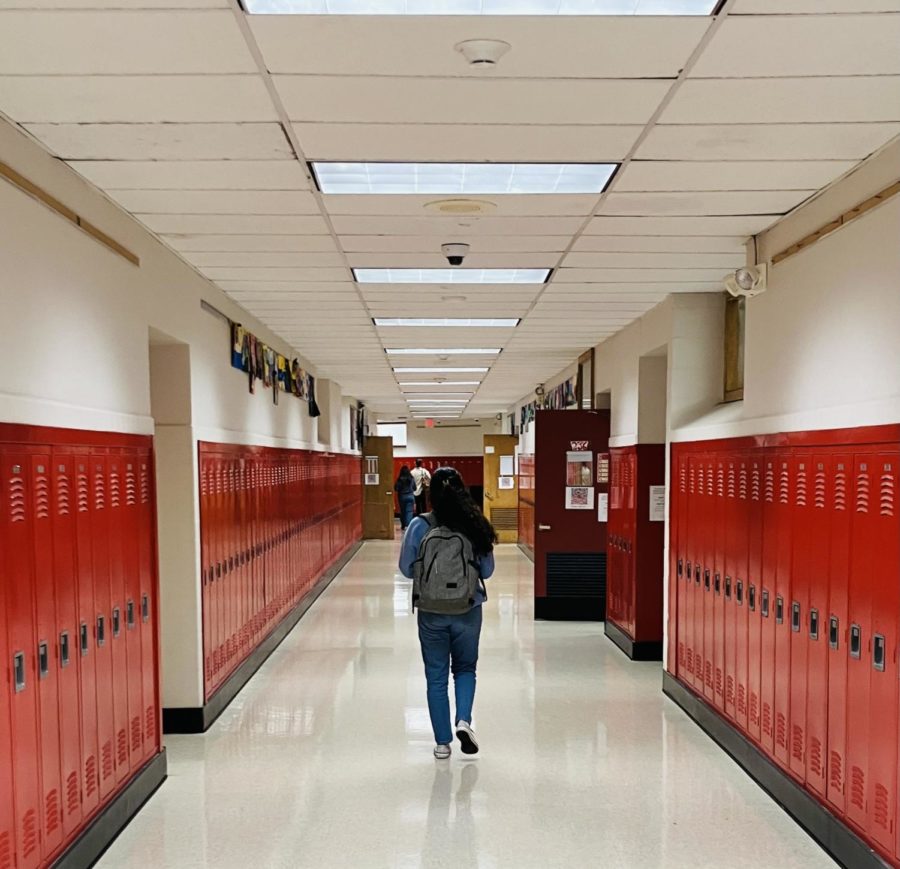Back to… “Normal”?
Masks are off, the idea of social distancing is essentially foreign, and things are how they used to be… right? Shifting gears from pandemic to post-pandemic, teachers are assigning more homework and reinforcing the basic classroom rules that many have forgotten through years of isolation in an attempt to bring things “back to normal.” But is “normal” even attainable?
It was challenging to switch gears so quickly — specifically due to the incredible toll quarantine had on my emotional health. There is a direct correlation between the pandemic and the spike in poor mental health; new CDC analyses reveal that in 2021, roughly 37% of high schoolers described having poor emotional health during the lockdown, and 44% have felt regularly hopeless and overall upset. Due to various factors — such as the lack of physical interaction, parental abuse (both emotional and physical), and the variability of life at the time — quarantine was mentally-draining. However, drastic measures are being taken to revert society to its previous state entering the post-pandemic world,
The pandemic brought about several changes in our daily lives; for some, it was a romanticized period, being a very relaxed (although confusing) time, whereas several others believed it to be a dark and lonely couple of years stuck at home. Talking with friends the past few years and seeing people’s faces, sophomore Oleg Kokarev describes how his mental health is beginning to improve from the deteriorated state it was in from sitting in his room all day with nothing to do. Though he sometimes misses quarantine, he also acknowledges how it helped him “appreciate physical interaction and see how much [he] needed it.”
Sophomore Tiffany Albornaz describes the transition from pandemic to post-pandemic as “interesting,” and talks about how fully adjusting will still require more time. She explains that “it was a little hard last year because [she] personally love[s] being surrounded by people and friends.” These past couple years, spending time with her friends in-person and meeting new people has definitely helped her mental health. Overall, though it can be overwhelming — especially with the rush of responsibility suddenly set on students — the transition into the post-COVID world has been fairly positive.
Exiting a time of solitude, we also are seeing changes in people’s mindsets and lifestyles. Kokarev explains how, unlike during quarantine, he has to “take responsibility for [his] attentiveness” (for example, keeping track of his demanding schedule and managing his time accordingly). His relaxed schedule during online school has evolved into a more time-consuming, productive one. Similarly, Albornaz “picked up new hobbies that helped [her] improve physically and mentally,” such as taking walks, which never interested her until lockdown. Personally, I’ve definitely grown into a more avid reader; with all the spare time I had during quarantine, I would finish book after book, and though I have significantly less time now that we are almost “back to normal,” I’ve carried that hobby since.
For a little over a year, we were isolated — many of us almost stuck in time while each day escaped us. Of course, the transition will take time; however, surrounded by other peers and appreciating the aspects of life that we lost during the pandemic, slowly but surely, we as a community will grow stronger whether it’s the “normal” we all think about, or an improved version.


